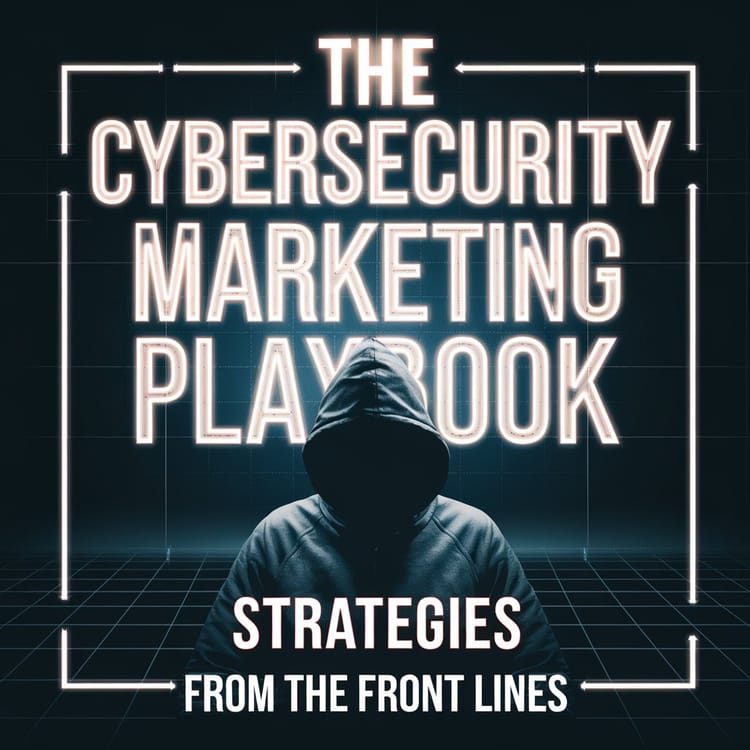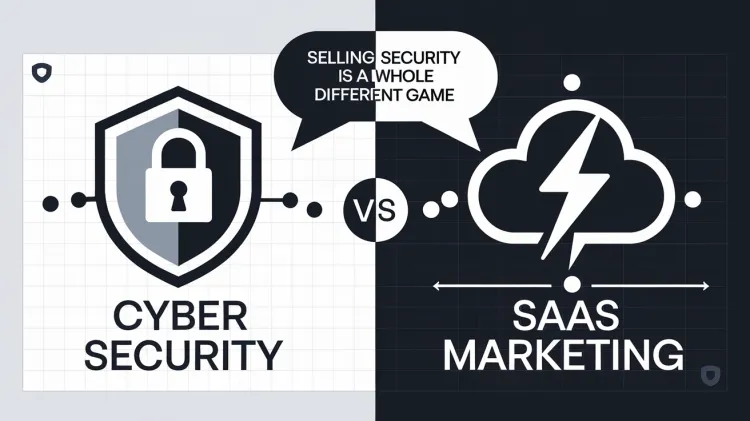Fueling Growth: How to Get More Product Qualified Leads (PQLs) for Your SaaS

Introduction: The Power of PQLs in a Product-Led World
In the fast-paced world of B2B SaaS, clinging to traditional sales-led approaches can feel like trying to catch fish with your bare hands – you might snag a few, but it’s inefficient and, frankly, a little outdated. These old-school methods often involve lengthy sales demos and qualification processes that can leave potential customers feeling like they’re stuck in a time warp.
What is a PQL?
This is where the magic of Product Qualified Leads (PQLs) comes in, especially in a product-led growth model. Imagine this: instead of your sales team chasing down every lead, your product itself acts as a giant, “you-qualify-yourself” booth.
A PQL is a lead who has gone beyond a simple website visit and actually experienced the value of your product. Think of a free trial user who’s created multiple projects, uploaded their entire team, or hit a usage milestone that proves they’re getting real value – that’s a PQL in action!
Take Slack, for instance. You don’t see them bombarding every new user with sales calls. Instead, they let their platform speak for itself. Once a team sends a certain number of messages and integrates other apps, they’ve essentially self-identified as a high-intent user – a prime candidate for a sales conversation about upgrading to a paid plan.
Why PQLs are the Secret Sauce
This shift towards PQLs is like trading in your old, clunky bicycle for a sleek electric scooter. It’s all about efficiency and scalability.
| Benefit of Focusing on PQLs | Description |
|---|---|
| Higher Conversion Rates | PQLs have already tasted what you’re serving, so they’re more likely to convert into paying customers. |
| Shorter Sales Cycles | Less time convincing, more time closing deals – music to any sales team’s ears! |
| Increased Revenue | More conversions + shorter sales cycles = a recipe for revenue growth. |
| Improved Product Adoption | By focusing on users who love your product, you encourage deeper engagement and organic growth. |
Focusing on PQLs is like planting a seed in fertile ground. You’re nurturing leads who are already showing strong interest, leading to stronger roots (customer relationships) and ultimately, a more fruitful harvest (revenue and growth).
Step 1: Define Your Ideal Customer Profile (ICP) and PQL Criteria
Before diving into lead generation tactics, you gotta know who you’re aiming for, right? It’s like setting sail without a compass – you might end up somewhere, but it probably won’t be your desired destination. This is where your Ideal Customer Profile (ICP) comes in. It’s a fictional, yet detailed, representation of your perfect customer.
Think of your current happiest customers. They love your product, consistently renew, and maybe even refer you to others. What do they have in common? Are they all in a specific industry like tech startups? Are they large enterprises or small businesses? Understanding these common threads will help you zero in on your ICP.
Let’s say you’re a company like Slack, which provides a communication platform. Their ideal customer might be a fast-growing tech company with 50-200 employees who highly value team collaboration and need a more efficient way to communicate than endless email chains.
Why is defining your ICP so important?
Defining your ICP is like having a superpower that helps you avoid wasting time and effort on leads who are unlikely to convert. Instead, you can focus your marketing and sales resources on the right people – those who are most likely to find value in your product and become long-term customers.
But how do you define your ICP?
You can start by considering these key characteristics:
| Characteristic | Description |
|---|---|
| Industry | Which industry does your ideal customer operate in? (e.g., Technology, Healthcare) |
| Company Size | Are they a small business, a mid-market company, or a large enterprise? |
| Needs and Pain Points | What are their biggest challenges, and how does your product solve them? |
Defining Your PQL Criteria
Once you’ve nailed down your ICP, it’s time to define your Product Qualified Lead (PQL) criteria. A PQL is basically a lead who has shown a strong indication of being a good fit for your product based on their actions within your product.
Think of it like this: imagine you’re at a farmer’s market selling homemade jam. A passerby who simply tastes your jam and walks away isn’t necessarily a PQL. However, the person who enthusiastically devours a whole sample, raves about your unique flavors, and asks if you have bigger jars? Now, that’s a PQL!
Just like setting goals, your PQL criteria should be SMART:
- Specific: Clearly defined and focused on particular actions within your product.
- Measurable: Quantifiable actions that you can track (e.g., “used a specific feature three times” or “invited five team members”).
- Attainable: Realistic and achievable for your target audience.
- Relevant: Aligned with the core value proposition of your product.
- Time-Bound: Occur within a specific timeframe (e.g., “within 7 days of signing up”).
Let’s go back to Slack as an example. Their PQL criteria might be something like this:
- A team of at least 10 users actively using the platform.
- Integration of at least three third-party apps.
- Consistent daily usage and engagement with core features.
By setting these specific criteria, Slack can identify leads who are deeply engaged with the platform and are more likely to convert into paying customers. Remember, defining your ICP and PQL criteria sets the stage for attracting the right users and turning them into loyal customers.
Step 2: Craft a Frictionless Onboarding Experience
A smooth and intuitive onboarding process is like rolling out the red carpet for your new users. It’s their first impression of your SaaS, and you know what they say about first impressions! If it’s clunky or confusing, they’re gonna bounce faster than you can say “product adoption.”
Get them to the “Aha” Moment (Quickly!)
The name of the game is time-to-value – get your users seeing the value of your product as quickly as possible. Think about it like this: imagine walking into a brand new coffee shop. You’re excited to try their coffee, but the barista throws a complicated menu at you with a million choices and then disappears into the back. Overwhelming, right?
That’s what a bad onboarding experience feels like. Instead, you want to be that barista who greets your customers with a friendly smile and says, “Hey, you look like you could use a great latte – our signature blend is amazing, let me whip one up for you!” Before they even know it, they’re sipping on delicious coffee and thinking, “Wow, this is great!” That’s the ‘aha’ moment!
Interactive Tours and Contextual Help
So how do you create that ‘aha’ moment in your SaaS? Interactive product tours are like that friendly barista – they guide users through your product’s key features step-by-step. Tools like Appcues or Userpilot let you build these right into your app.
And just like that helpful barista who answers your questions, contextual help is there to provide support exactly when and where users need it. Instead of making them dig through help docs, offer tooltips, in-app messages, and knowledge base articles that are relevant to what they’re doing right now.
| Onboarding Technique | Description | Benefits |
|---|---|---|
| Interactive Product Tours | Guided walkthroughs of key features | Reduced learning curve, faster time-to-value, improved user engagement |
| Contextual Help | Targeted support within the app | Reduced frustration, increased self-service, improved user satisfaction |
By making your onboarding process all about quick wins and providing support at every turn, you’re setting your users up for success and drastically increasing the chances they stick around for the long haul. And hey, more happy, engaged users means more opportunities to turn those users into those valuable PQLs.
Step 3: Leverage Product Usage Data for Lead Qualification
This is where things get really interesting. You’ve got all this valuable product usage data at your fingertips – let’s put it to work! Instead of just guessing who’s likely to become a high-value customer, you can actually see how they interact with your product.
Identify Your Product’s All-Stars
First things first, figure out what makes a customer truly great (from your business’s perspective, of course!). Are they using a certain feature religiously? Maybe they’re inviting their entire team to collaborate.
For instance, imagine you’ve got a project management tool. You might find that users who create at least five projects and have three or more collaborators are the ones who end up upgrading to your top-tier plan and sticking around for the long haul. Those are your VIPs!
Product Analytics: Your Secret Weapon
Once you know what to look for, you need a way to track all that juicy user behavior. That’s where product analytics tools come into play. They’re like x-ray glasses for your SaaS, giving you an inside look at what users are doing inside your app.
Think of tools like Mixpanel, Amplitude, or even good ol’ Google Analytics. They can tell you which features are a hit, where users tend to get stuck, and how often they’re coming back for more.
Sift and Sort: Finding Your PQLs
Armed with this treasure trove of data, you can start segmenting your users like a pro. Create groups based on their activity levels, the features they love, or even how often they reach out to customer support.
Let’s say you discover a group of users who haven’t quite hit those magical “five projects, three collaborators” criteria but are quickly adding new tasks and checking off their to-do lists like champs. They might not be ready to upgrade today, but their behavior screams “future power user.” Keep a close eye on them – they’re your PQLs in the making!
Remember, the more you analyze product usage data, the better you’ll understand your users and the more accurately you can predict who’s ready to take the plunge. And that, my friend, is the name of the game in lead scoring and customer segmentation.
Step 4: Drive Engagement with Targeted In-App Messaging
Okay, here’s that section of your blog post about getting more product qualified leads:
Think about in-app messaging as your secret weapon for turning casual users into SaaS superstars! It’s all about guiding them through your product, showing them the ropes, and making them love what your SaaS can do. Imagine this: a new user is exploring your project management app for the first time. They seem a little lost, hovering their cursor over different features. Instead of letting them wander aimlessly, a friendly in-app message pops up. It says something like, “Hey there! Want to learn how to create your first project and invite your team? Click here for a quick tutorial!” See? Helpful, friendly, and totally not pushy.
Personalization is Key
Now, let’s talk about personalization. You wouldn’t send the same generic postcard to everyone you know, right? Same goes for in-app messages. You want to make sure you’re sending the right message to the right person at the right time. Let’s say someone’s been using the free version of your graphic design software for a while now. They’ve designed some cool stuff, but they’re hitting the limits of the free plan. An in-app message that says, “Ready to unlock your full creative potential? Upgrade to Pro for unlimited designs and exclusive features!” could be just the nudge they need.
| User Action | Personalized In-App Message Example |
|---|---|
| Signs up for a free trial | “Welcome! Here are some resources to help you get started.” |
| Uses a specific feature frequently | “Love using [feature]? Here’s a pro tip to get even more out of it!” |
| Reaches a usage milestone | “Congrats on reaching [milestone]! Ready for more? Check out our premium plan!” |
Gentle Nudges Go a Long Way
Think of in-app prompts as friendly little reminders. They’re not about being pushy; they’re about gently encouraging users to explore more of what your product offers. For instance, you could use in-app prompts to encourage users to:
- Upgrade to a paid plan: Highlight the benefits of upgrading, like increased storage, advanced features, or priority support.
- Try new features: Showcase the value of underutilized features and how they can improve the user experience. Think about how Spotify does this, nudging users towards new music based on their listening history.
- Invite team members or collaborators: Make it super easy for users to spread the love (and boost your viral growth!). Offer incentives, like discounts or extra features, for successful referrals. Dropbox’s referral program is a classic example – refer a friend, get more free storage!
By making your in-app messages crazy helpful and relevant, you’ll build stronger relationships with your users, and that’s a surefire way to turn them into happy, paying customers.
Step 5: Create Valuable Content that Educates and Nurtures
Attracting potential customers to your SaaS is awesome, but what’s even cooler? Turning them into hot leads who are genuinely interested. That’s where content marketing swoops in to play a starring role. It’s all about creating killer content that not only grabs attention but also subtly shows how your product is the answer to their prayers.
Address Customer Pain Points
Think of it this way: you wouldn’t offer someone a band-aid if they’re complaining about a toothache, right? The same goes for content. You’ve got to hit the bullseye by addressing their specific pain points. Let’s say you’ve got a project management tool. Instead of generic “productivity tips,” dive deep into the struggles of remote teams staying aligned. A blog post like “Taming the Chaos: How to Wrangle Remote Teams and Hit Deadlines” is more likely to resonate.
And hey, don’t forget the power of showing off! Case studies are like testimonials on steroids. They scream, “Look, we helped this real company solve this exact problem!”. For instance, you could showcase how a design agency used your tool to streamline their workflow, resulting in a 20% decrease in project completion time. Numbers don’t lie!
Content Formats for Every Taste
We all have that one friend who devours books and another who prefers a quick TikTok video. It’s the same with your audience – cater to their different learning styles with a variety of content formats.
Think blog posts (like this one!), juicy case studies, engaging webinars where you can answer questions live, snappy infographics that make complex data digestible, and even entertaining videos. Remember, variety is the spice of life and content marketing!
Marketing Automation: Your Content Wingman
Imagine having a personal assistant who delivers the perfect piece of content to the right person at just the right moment. Well, that’s marketing automation for you!
Think of it as setting up a series of automated emails triggered by specific actions. Let’s say someone downloads that “Remote Team Guide” we mentioned earlier. Boom! They automatically get enrolled in an email sequence that drips them more goodies, like a checklist for effective remote collaboration or an invitation to a webinar on remote team communication best practices.
Remember, lead nurturing is a marathon, not a sprint. By consistently providing valuable content that educates and guides your leads, you’re building trust and credibility, pushing them further down the funnel towards that sweet, sweet conversion.
Step 6: Measure, Analyze, and Optimize for Continuous Improvement
Alright, so you’ve set up your PQL process and are starting to see some promising leads. Now, let’s talk about how to make sure your strategy keeps getting better over time.
Track the Right Metrics
Think of this stage like tuning up your car. You’re not changing the engine, just making small adjustments for better performance. To get granular, you need to keep your eyes on some key metrics:
- PQL Conversion Rates: This shows what percentage of your website visitors are actually becoming PQLs. It’s like measuring how many people walk into your store. A higher conversion rate usually means your marketing is attracting the right people.
- PQL-to-Customer Conversion Rates: This metric tells you how many PQLs actually end up becoming paying customers. This is like seeing how many people in your store make a purchase. A high rate here means your product is sticky and your sales process is smooth.
- Customer Lifetime Value (CLTV): CLTV tells you how much revenue you can expect from a single customer throughout their entire relationship with your business. It’s like knowing which customers are your regulars and big spenders. By understanding CLTV, you can prioritize PQLs who have the potential to be highly valuable in the long run.
To put this into perspective, imagine you’re running an online coffee subscription service:
- Your PQL conversion rate would measure how many website visitors sign up for a free trial or coffee quiz.
- Your PQL-to-customer conversion rate would track how many of those free trial users become paying subscribers.
- Your CLTV would tell you the average amount a customer spends on your coffee subscriptions over the time they’re subscribed.
Analyze Your Data and Look for Areas to Improve
This step is all about finding the hidden messages in your data. Let’s say you notice your PQL conversion rate is a bit low. Maybe people are landing on your website but aren’t taking that next step. It could be that your call-to-action isn’t clear or enticing enough. Maybe your free trial sign-up process is too complicated.
By digging deeper into your data, you can identify those leaky points in your funnel and start patching them up.
Don’t Be Afraid to Experiment and Tweak Your Approach!
Remember, the goal is to continuously improve. What works today might not work as well tomorrow. So, be open to experimenting with your PQL generation strategy. Try new things, A/B test different approaches, and don’t be afraid to ditch what’s not working.
Think of it like trying to perfect a recipe. You wouldn’t just make it once and assume it’s the best it can be, right? You’d tweak the ingredients, adjust the cooking time, and keep experimenting until you find the perfect formula. The same goes for your PQL strategy.
By tracking your metrics, analyzing the data, and continuously optimizing, you can build a PQL generation engine that consistently delivers high-quality leads and fuels your SaaS growth.
Conclusion: Embracing the Product-Led Growth Mindset
The truth is, getting more product-qualified leads boils down to a fundamental shift in mindset. It’s about moving away from chasing customers and towards building a product so good, it practically sells itself. That’s the essence of product-led growth.
Think of it like this: imagine you’re at a party, and you see someone trying way too hard to get attention. They’re shouting, interrupting conversations, and generally coming across as desperate. Not a great look, right? Now imagine someone else who’s simply being themselves, engaging in genuine conversations, and letting their personality shine. Who are you more likely to connect with?
The same principle applies to your SaaS. By prioritizing your product and its value, you can naturally attract the right users who truly need what you offer. It’s about building a product that solves a real problem so effectively that it becomes the go-to solution in your niche.
Data is your friend
But how do you know what your users really want? That’s where data-driven decision-making comes in. Instead of guessing, let your product usage data guide your strategy.
For instance, platforms like Amplitude or Mixpanel can track how users interact with your product. Are they using certain features more than others? Are there any points in the user journey where people tend to drop off? By understanding these patterns, you can identify areas for improvement and double down on what’s working.
Think of it like baking a cake. You wouldn’t just throw ingredients together without a recipe and hope for the best, right? Data is your recipe for success – it tells you what works, what doesn’t, and how to refine your approach.
Building for the long haul
Ultimately, embracing a product-led growth mindset is about setting your SaaS up for sustainable growth. You’re not just trying to close quick deals; you’re building long-term relationships with customers who love your product.
And the best part? When your product does the heavy lifting in the customer acquisition process, you’ll find that your SaaS marketing becomes much more effective. Instead of convincing people to try your product, you’re simply amplifying the value that’s already there. It’s a win-win for everyone involved.



